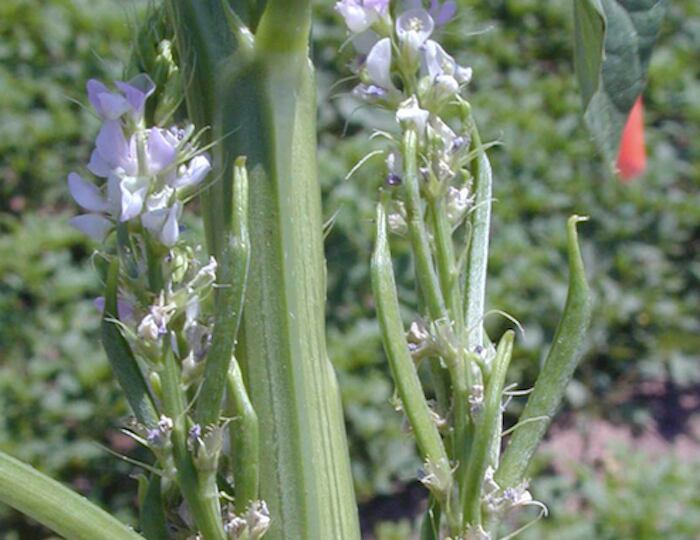Crisis boosts interest in gut health
Interest in prebiotics has never been higher. Google Trends data shows that searches using the term ‘prebiotics’ have almost doubled this year from what they were averaging last year, and interest has spiked in the most recent full reporting period of April 19-25. Ancillary data suggests many of these searchers may have been conducted by consumers new to the category. For example, searches using the term ‘examples of prebiotics’ are up more than 800% and ‘benefits of prebiotics’ searches have climbed 250%, according to Google’s data portal.
According a recent report from industry analyst Julian Mellentin, principal in the firm New Nutrition Business, the coronavirus crisis has boosted interest to unprecedented heights in any product that has even a sideways immunity association. The gut health—immunity tie-in is what’s operative here, and while that is serving to boost interest primarily in probiotics, prebiotics appear to be coming along for the ride.
Searchers on ‘probiotics immune’ have spiked this year, according to Mellentin’s new report, whereas ‘probiotic digestion’ searches have remained static. Prebiotics appear to be following that trend, just a bit later in time. Preliminary Google data on the search term ‘prebiotics immune’ shows a projected hockey stick-like jump in the graph in the most current reporting period extending to May 2, for which data is obviously still incomplete.
New member comes at a good time
That market excitement makes it a propitious time to add a new member like FrieslandCampina Ingredients, said GPA director Len Monheit.
“FrieslandCampina is a foundational company that has a wide breadth of research,” Monheit said.
Monheit noted that FrieslandCampina has a robust digestive health portfolio, including dairy-derived galactooligosaccharide (GOS) and the company’s Human Milk Oligosaccharide (HMO) 2’FL.
“FrieslandCampina Ingredients is known for leading the way in prebiotics with their well-researched GOS as well as 2’FL,” Monheit said. “Having them join GPA continues to expand our global presence, adds a well-substantiated ingredient set.”
“Our digestive health portfolio leverages our experience in infant nutrition, especially HMP, to now offer GOS and 2’FL another oligosaccharide,” said Neus Bonavida, market segment manager for FrieslandCampina. “Global consumer interest in digestive health is growing rapidly and we are excited to work with GPA to steward this exciting category.”
Monheit noted that one of the things FrieslandCampina brings to the table that is of interest is it involvement in different stages of nutrition.
“They are bring us their involvement in different life stages of nutrition, including infant nutrition and post infant nutrition,” Monheit said.
Prebiotics as a category straddle the food/supplement divide. In the past many ingredients derived from carbohydrate sources needed large dosages to claim effectiveness, up to 10 grams or more, Monheit said. That made it difficult to impossible to fit them into a supplement delivery form such as a capsule, tablet or gummy. So many prebiotics ended up as easy-to-formulate-with ingredients in functional foods like nutrition bars and meal replacement drinks.
Are prebiotics fibers?
The market position of some of these ingredients was complicated by an FDA guidance on the definition of dietary fiber as it relates to purified and isolated fibers that was issued in 2016. Many popular prebiotic ingredients, such as inulin, did not meet this definition at first in the agency’s view, meaning manufacturers could not make a fiber claim on their labels related to the inclusion of these ingredients. But Monheit said most of those ingredients have since successfully petitioned FDA for inclusion on the fiber list after review of their scientific data.
The practical restriction of prebiotics as mainly food ingredients is changing, too, Monheit said. The developers of some polyphenolic ingredients have assembled enough data about what effects these substances have in the gut to make a plausible prebiotic claim, and the dosages of these ingredients are generally far less than one gram, making a supplement positioning possible.
“The science on this is burgeoning as we speak. We have seen good data on polyphenols from cranberry, pomegranate, green tea and black currant,” Monheit said.
Defining ‘prebiotic’
One issue that has hovered over the category really from the inception of the term ‘prebiotic’ is that there is no accepted regulatory definition of what that ought to mean. Is it necessary to have one? And, if so, what’s the right way to go about it?
“We are taking a couple of pages out of the playbook of the International Probiotics Association,” Monheit said. “They established a good dialogue with Health Canada and with FDA to educate them on developments in the category. That’s the first step.”
“I think there is still a lot of work to be done to get to a tight milestone regulatory definition,” Monheit added.




